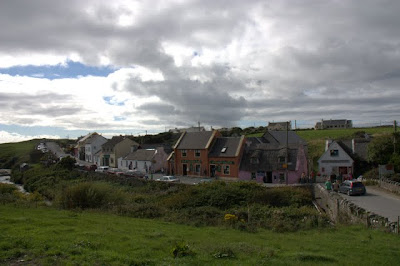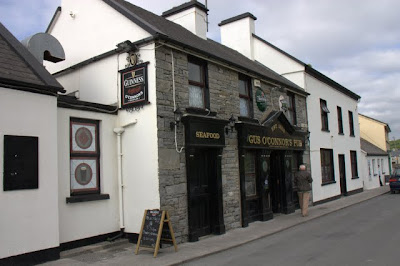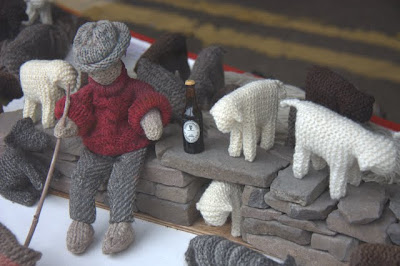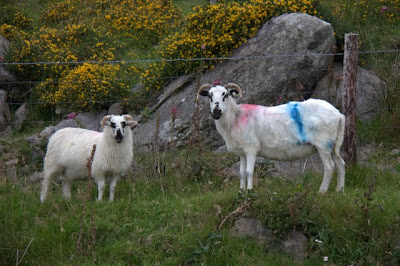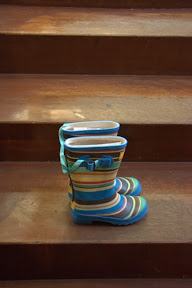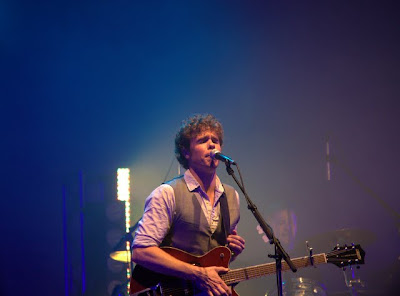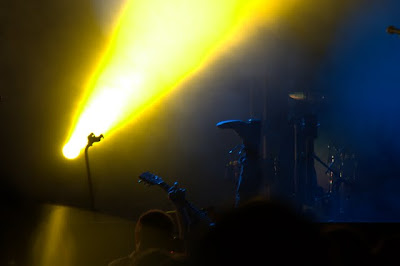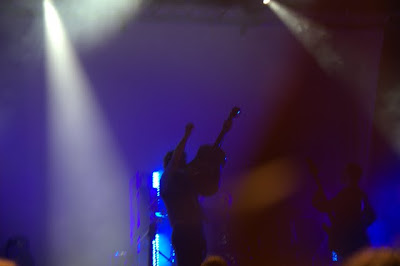On Craic and Irish Phrases
It was immediately apparent that the Irish love to talk. And not just, hi, how are you, where you from types of exchanges, but actual, real conversations. (Although the economy and the weather were still definitely the most popular topics). After months of having only brief stilted conversations in whatever English someone could muster, it was refreshing just to shoot the breeze.
The Irish even have a name for what Americans would call b.s. The Irish call it craic, which I understand to mean the art of pure conversation just for conversation’s sake.
Some touristy pubs try to capitalize on the Irish love of craic. Anytime I saw a sign saying Live Traditional Music Every Night! Lively craic here! I knew that was not where we wanted to go. Something tells me that you can get the best craic in places that don’t advertise it.
You never know where you’ll get your craic fix in Ireland. For me, the best extended craic fix was in Doolin. Doolin is a tiny village, by the sea, at the outer point of County Clare. It is reportedly known for its local traditional music. The guidebooks report that there are only three pubs in the village, but a local told us there are actually four.
We heard that Gus O’Connor’s was the best, but we never made it there. We started at one in the upper end of town and listened to the band there for a while. Matt and Tony left ahead of us to head to Gus O’Connor’s while the rest of us finished our drinks. Knowing Matt and Tony like the four of us do, we had the foresight to stop in McGann’s, the pub right down the road, before walking to the other side of town. Sure enough, there were Matt and Tony, who had decided to stop for a quick pint before heading up the road. Except we never headed up the road, and somehow a quick pint ended turned into Tony, at 1:00 a.m., trying to pay the bartender 50 euros to keep the bar open.
But I’m jumping ahead of myself. When we got in the pub, the boys started watching the band. For some reason, Danielle and I hung back by the bar, and somehow got wrapped up in conversations with a colorful cast of characters. I started talking to a man named Patrick. Patrick introduced me to a dairy farmer (who was amused by my interest in his work, but I had lots of burning questions about the cows). Somewhere along the line, I started chatting with a guy from Dublin, while Danielle carried on talking to Patrick. At some point, a very drunk Irish/Australian guy jumped in, and the craic just continued from there.
Before we knew it, the music was over, and the bartender locked the doors and began pulling the curtains. Best we can figure out, once you are in, you are in, and you can continue drinking in a bar as late as the bartender keeps serving. At some point, they try to kick you out. If you’re Tony, that’s when you get out your wallet, tell Matt to get two drinks and give the bartender the rest if they’ll keep serving.
Before getting the boot, Danielle and I were talking to a woman from the band (we think, because we never really saw the band), and she declared that we must have our pictures taken with the owner. She grabbed my camera from my hand and told us to smile, but then realized that she had the camera turned around to point at herself! She then insisted that Danielle and I take our picture with her. She thrust my camera towards Matt, who happened to be standing there. Here, the woman barked at Matt. Take our picture! Being the usual smartass that he is, Matt started taking pictures of the ceiling instead of us. The woman grabbed the camera out of his hand and exclaimed, Oh, for fuck’s sake!
Thus, sometime between 1 to 2 a.m. in Doolin (who can be sure?), our new Irish catchphrase was born. Although in general we tried to keep our fake Irish accents to a minimum on this trip, it really is necessary to say this with as much brogue as you can muster.
Irish Blues and Greens
The Ireland most people think about is the reason it is called the Emerald Isle: the miles and miles of nothing but green hillsides and valleys. (And sheep). The green rolls all around you, on all sides, often straight into the sea. From time to time, you find crumbling Gaelic ruins.
The green grasses are intense and vibrant. I try to think of the correct hue from the Crayola box, but can only come up with shamrock green. You know the green always associated with St. Patrick’s Day? That is the color of County Clare and County Kerry. Only it is real, not manufactured.
You can’t get the true sense from the pictures of what it feels like to be surrounded by all of that vibrant green, so you’ll just have to take my word for it and go there yourself someday.
Many of the small Irish towns share the same characteristics of being based around a a main street lined with bright multi-colored shops and pubs. They all have that look – that Irish look – but none more than the towns in County Clare and County Kerry.
Doolin:
Dingle:
There are lots of other special places around the Republic, but County Clare and County Kerry were our favorites (with County Donegal as a runner-up).
The Sheep Rules
After being surrounded by the wooly critters at Mont St. Michel, I developed a certain affinity towards sheep. Driving around the Ireland countryside turned my affinity into a full-blown obsession.
You can’t avoid the sheep in Ireland. They are EVERYWHERE. Real ones, wandering around the green grasses. By the sea. Inland. Up the hills, out on cliffs, on flat land. Ambling across the road. Even black ones. Fake ones, in every Irish gift shop. On t-shirts. As stuffed animals.
The sheep are really what make the Irish countryside, in my opinion. Their shaggy off-white coats provide the perfect contrast to the vibrant green grasses. On the rare sunny day, the sheep mirror the fluffy white clouds in the sky. Sometimes, all you can see for miles is shades of blue in the ocean and sky, shades of green grasses, and shades of white in the clouds and sheep. Other times, the gray takes predominance over every other color. Even then, the wooly white still dots the landscape.
More often than not, the sheep add even more colors to the mix. The vast majority of the sheep are painted with some sort of bright color. I assumed the paint was some sort of marking system for the farmers, but I didn’t understand why some of the markings were so extensive. I later learned that the paint is washable and not permanent, and subsequently saw the proof in the window of a vet clinic:
I am sure that the branding spray is a practical solution to wandering sheep, but it interfered with my quest for a photo of the quintessential Irish landscape.
You would think by looking at my sheep photos that the sheep do something else besides eat. That would be a lie. Sheep are really just wooly, fuzzy pigs in disguise. They eat, constantly. It took hundreds of pictures of sheep to come up with ones where you could actually see anything other than there wooly butts. Their heads are always downward. They are worse than ostriches.
In order to maximize the opportunities for the best sheep photos, we had to develop the sheep rules. We were travelling in a two-car caravan without cell phones. As we learned the hard way, it is impossible for the second car to stop on its own accord. Thus, the sheep rules were born:
- We should stop for sheep that are wooly and fuzzy and unshaven.
- We should stop for sheep that are not branded with spray.
- We should stop for sheep that are by the sea.
- We must stop for any combination of the above.
Somehow, although there was much talk of the sheep rules, no one ever really enforced the failure to follow the rules. Besides, no matter where and when we stopped, there were some kind of sheep to be found.
Initially, we mistook certain sheep as goats. We thought horns were an indentifying feature of a goat, but it turns out that it is the tail. Sheep have tails that stand straight up, and goats have tails that point downward. Or maybe it was the other way around. Who knew? We didn’t. Standing on the side of the road on Conor’s Pass, a one six-foot lane pass through a mountain covered in sheep and fog, the six of us tried to remember our farm animals. I actually think they are goats, not sheep. No, they’re sheep! Wait, are sheep and goats the same animal? Not sure, but what’s a lamb? Baby sheep, right? Hmm, what’s an alpaca? I should be an alpaca farmer. Being the city folk that we are, we had to turn to The Google for answers.
One thing we didn’t ask The Google was why the sheep were being raised. Naively, we all assumed the sheep were there to shaved and shorn and later worn as one of the million wool sweaters sold all over Ireland. Then they would go on living their happy little sheep lives grazing by the sea while the owner of the sweater was nice and toasty warm. It was a sad day when we learned that may not be the case. As our last stop on the island of Ireland, we stayed at a beef and sheep farm to get up close and personal with the sheep. There, the farmer told us that he only gets 1.00 for the wool, but it costs him 1.50 to have the sheep shaved. So, what do you raise the sheep for? I asked, not wanting to hear the answer. Meat, he answered, simply. I paused before I asked the next question. You said you mostly have lambs. Do you raise them for meat, too? Yep, he said, cheerily. We kill everything!
Ten Things About Dublin
So, we received conflicting information about Dublin.
In the Irish countryside, we met two bikers from Dublin. They were insistent that Dublin was where it was at. Ya got to get to Dublin! Dublin’s the center of the universe!
A couple of days later, in a pub in Dublin, after the rest of us had gone home for the night, Tony and Jason were talking to two Irish lads who asked where they had visited in Ireland. When Jason told them they only had seen Dublin so far, they seemed very concerned. You gotta leave Dublin, man, they said, urgently. You’ve gotta get the f*ck out of Dublin!
(This last piece of advice made us slightly alarmed. They way they made it sound (or at least the way Jason told the story the next day), it was almost like they knew an apocalypse was about to happen and they were the only ones who knew about it).
While I can’t say I agree that Dublin is the center of the universe, here are ten things about Dublin that made me smile before we got the f*ck out of there (and none even involve alcohol!):
Murphy’s homemade Irish ice cream, made with the cream from the rare Kerry cow and natural ingredients… (this also made me smile in Dingle…and in Kilkenny…)
Queen of Tarts…
The doors of Dublin…
A “secret” garden…
This trio of young street performers, singing I wish, that, I knew what I knew now, when I was younger…
Rainboots and wool scarves at Avoca…
Bridges…
The light shining on this church…
and, last but not least, the man at the camera shop who fixed my camera for nothing more than the cost of a new filter after I dropped my camera and almost shattered the lens…(moral of the story: buy a filter for your lens!!!… and don’t let a klutz take an expensive camera around the world…)
Josh Ritter: in Ireland!
“I play rock ’n’ roll with lots of words.” – Josh Ritter.
Anyone who knows me, and anyone who pays attention to this blog (Hi, Mom!) knows that I absolutely, completely, love Josh Ritter and the Royal City Band.
I’ve seen Josh Ritter and his band play in some pretty cool places. Club Cafe in Pittsburgh, before they got “big.” (Big being relative, because they still aren’t anywhere near big). At a free concert in downtown Salt Lake City, and, later that same week, at the Mile High Music Festival in Denver. With the New York City Pops backing the band in Central Park.
But, without a doubt, my favorite show was the one we saw at the Galway Arts Festival. Maybe it was because it had been a while since we heard really, really good live music. (The guy with the green plastic kazoo later that night notwithstanding). Maybe it was because we were part of the biggest crowd in front of which Sean and I had ever seen the band play. Maybe it was because the band seemed really on that night. Maybe it was because they love Josh Ritter and the band in Ireland, and so do I.
As my cousin Karen would say, Josh Ritter makes my heart happy. I’m not the first person to say it, and I won’t be the last: Josh’s smile is downright infectious. You can’t help but smile too.
Our friend McIntyre joined us for the show. Is he on drugs, he wanted to know? No, I said. He’s always like that.
From the moment the band took the stage with bright lights bouncing to the beat of Lantern, from the new album, to the encore, which included one of my favorites, Snow is Gone, there was energy in the air. One or two songs from one of their older albums, The Golden Age of Radio, usually sneaks in, but is rare to hear Roll On and Me and Jiggs, more favorites of mine. The new album was well represented, of course, but so were the last couple of albums. I always like to hear what sort of creative spin the band puts on Harrisburg, a song born to be played live. I certainly was not expecting an insertion of Chris Isaak’s Wicked Game sung by Zack Hickman, the bassist. And, I’m not sure, but I swear I heard a bit of the Talking Head’s Once in a Lifetime as well.
I had been wanting to see Josh and the band play in Ireland for a long time. The show in Galway will definitely be one of my highlights of the trip.



